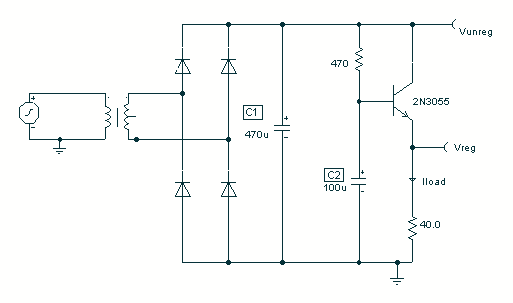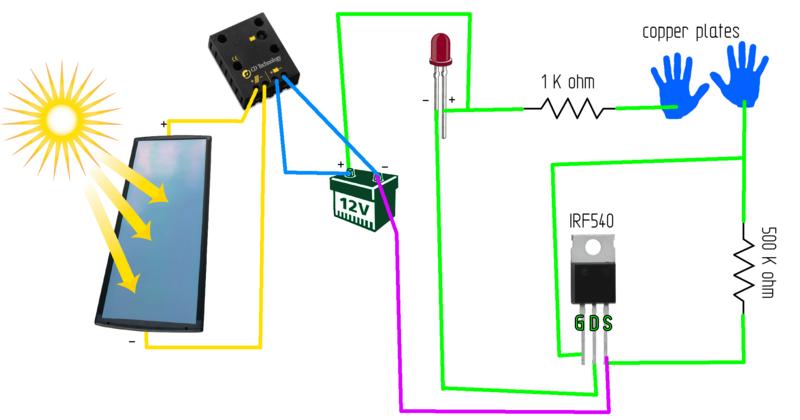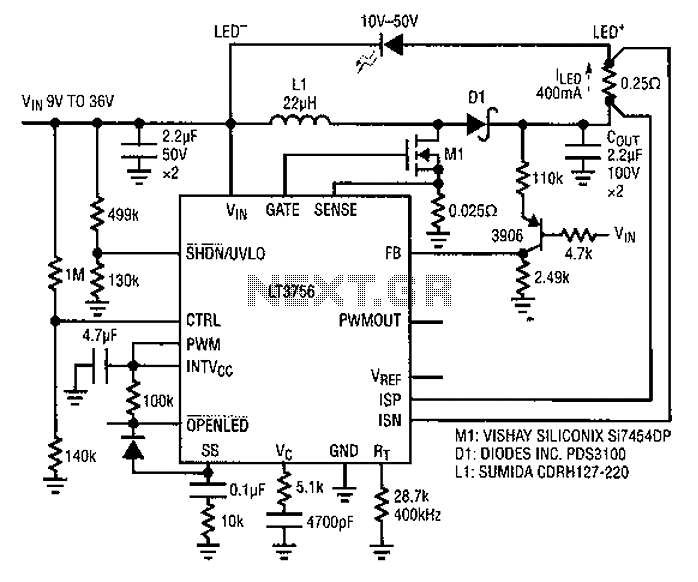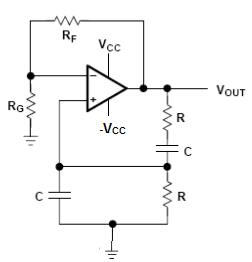
Sine-Wave Vco Circuit
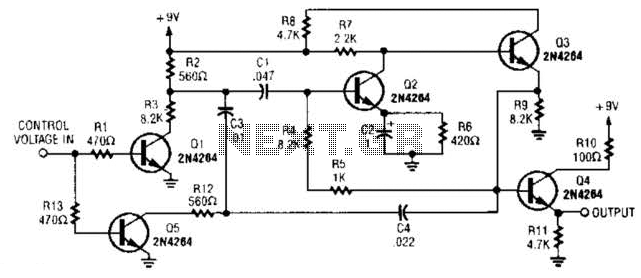
A DC control voltage varies the effective resistance in the feedback network consisting of capacitors C4, C3, C1 and resistors R12, R3. Additionally, Q2 and Q3 serve as the oscillator transistors.
The circuit operates by utilizing a DC control voltage to modulate the resistance within the feedback network, which is comprised of capacitors C4, C3, C1 and resistors R12, R3. This modulation affects the overall gain and stability of the feedback loop, allowing for dynamic adjustment of the circuit's performance characteristics.
The capacitors, C4, C3, and C1, play a crucial role in determining the frequency response of the circuit, while resistors R12 and R3 are integral in setting the biasing conditions for the transistors Q2 and Q3. These transistors function as the oscillator elements, generating a periodic waveform that can be used for various applications, such as signal modulation or clock generation.
The feedback network's design is essential for ensuring that the oscillators remain stable and operate within the desired frequency range. By varying the DC control voltage, the effective resistance can be altered, which in turn influences the oscillation frequency and amplitude. This approach allows for fine-tuning of the circuit's output, making it adaptable to different operational requirements.
Overall, the described circuit demonstrates the interplay between control voltages and feedback components, highlighting the importance of careful design in achieving reliable and efficient oscillator performance. A dc control voltage varies the effective resistance iri feedback network C4/C3/C1 and R12/R3. Q2/Q3 are the oscillator transistors.
The circuit operates by utilizing a DC control voltage to modulate the resistance within the feedback network, which is comprised of capacitors C4, C3, C1 and resistors R12, R3. This modulation affects the overall gain and stability of the feedback loop, allowing for dynamic adjustment of the circuit's performance characteristics.
The capacitors, C4, C3, and C1, play a crucial role in determining the frequency response of the circuit, while resistors R12 and R3 are integral in setting the biasing conditions for the transistors Q2 and Q3. These transistors function as the oscillator elements, generating a periodic waveform that can be used for various applications, such as signal modulation or clock generation.
The feedback network's design is essential for ensuring that the oscillators remain stable and operate within the desired frequency range. By varying the DC control voltage, the effective resistance can be altered, which in turn influences the oscillation frequency and amplitude. This approach allows for fine-tuning of the circuit's output, making it adaptable to different operational requirements.
Overall, the described circuit demonstrates the interplay between control voltages and feedback components, highlighting the importance of careful design in achieving reliable and efficient oscillator performance. A dc control voltage varies the effective resistance iri feedback network C4/C3/C1 and R12/R3. Q2/Q3 are the oscillator transistors.
